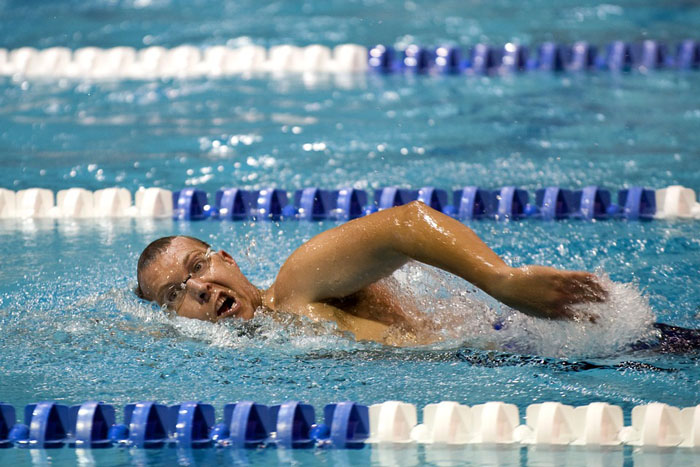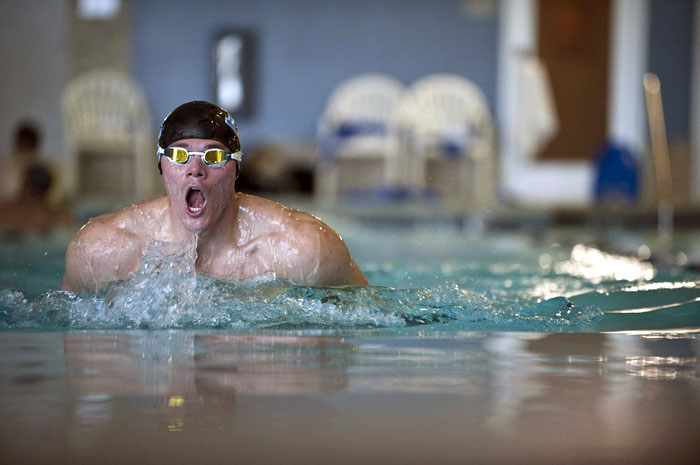There are four main competitive swimming strokes recognized by the International Swimming Federation (FINA): Freestyle (Front Crawl), Backstroke, Breaststroke, and Butterfly.
Over time, various swimming techniques and strokes evolved. The earliest known swimming stroke, dating back to ancient Egypt, was a form of breaststroke, taken from cave paintings in Egypt that depict humans swimming. In the late 19th century, competitive swimming gained popularity, and the first swimming organizations were established. The breaststroke was the dominant stroke in early swimming competitions, but it gradually evolved into a more efficient technique known as the "trudgen crawl."
In the early 20th century, the Australian swimmer Richmond "Dick" Cavill introduced a new technique that would later become the modern freestyle stroke, known as the front crawl. This stroke revolutionized competitive swimming due to its speed and efficiency. The butterfly stroke emerged in the mid-20th century as a variation of the breaststroke, with swimmers experimenting with a simultaneous arm movement and an undulating dolphin kick.
Swimming strokes and techniques have continued to evolve and be refined over the years, with advancements in training methods, technology, and understanding of hydrodynamics. Today, these four main strokes are the foundation of competitive swimming, each with its unique characteristics and techniques. Below is a simple explanation of each of these.
Freestyle
In freestyle swimming events, as the name implies, the stroke used is not limited by any particular technique. Swimmers in freestyle events are free to use any stroke they wish, it is just that the stroke that is commonly called freestyle (which is also known as the front crawl or Australian crawl), is the fastest swimming stroke. The only limits is that only 15 meters can be swum underwater (from the start and from each turn), otherwise some body part must always be above the water. Some believe that the front crawl stroke was developed by Richard Cavill, an Australian who first combined the overarm stroke with the up and down kicking motion. more
 freestyle swimmer
freestyle swimmerBreaststroke
Swimmers of the breast stroke must follow strict rules when performing the stroke. Their shoulders must be kept in line with the water, arm and leg movements must be pushed forward together, and brought back under the surface of the water. At the turn and finish, both hands must touch the wall together. At the start and first stroke and kick after a turn, the swimmers are allowed one arm stroke and one leg kick. At all other times the swimmer's head must be kept above the surface of the water. No dolphin, scissors or flutter kicks are allowed, nor tumble turns. more
 breaststroke swimmer
breaststroke swimmerButterfly
The butterfly stroke evolved from experiments with the breaststroke. This technique may have been invented by the German E. Rademacher in 1926, and improved upon by American Henry Meyer and accepted in competition in 1933. However, it took many controversial years up to 1953 before the butterfly stroke was officially recognized and included in the Olympic Games (in 1956). When swimming the butterfly stroke, the swimmers must keep their shoulders in line with the surface of the water, and make arm and leg movements together. They also must not swim underwater, except for the first stroke after the start and each turn. Only 15 meters are allowed underwater at the start and after each turn, and the wall must be touched with both hands. more
 butterfly swimmer
butterfly swimmerBackstroke
When swimming the backstroke, the swimmers remain on their back. This technique was first swum with a frog kick (like the breaststroke) then the up and down from that is used now. Similar to the freestyle, only 15 meters can be spent underwater from the start or from each turn. In 1991, the rules were changed so that when turning, the swimmers did not have to touch the wall with their hand, enabling them to do a much faster turn. more
 backstroke swimmer
backstroke swimmerMedley relays
In the individual medley races, the order of strokes is butterfly, backstroke, breaststroke, and freestyle. In the medley relay, the order is backstroke, breaststroke, butterfly, and freestyle, with the first swimmer starting in the water. more
Related Pages
- See also Swimming Terminology
- Swimming Science
- Guide to Learn Swimming for Beginners
- Swimming at the Olympic Games and Commonwealth Games
- More about the sport of swimming
- Swimming Strength training programs


 Upcoming Events
Upcoming Events